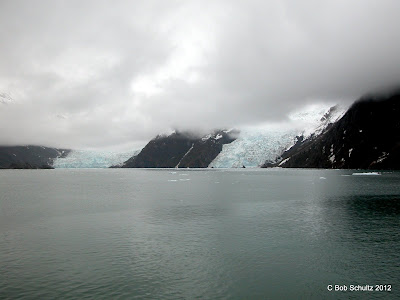Distance and time: about 222 miles/4 hours
Homer, Alaska, famous for its spit of land that reaches
out into Kachemak Bay, is also noteworthy for its tides and strong tidal
currents. The wide range—average of 15 feet and differential between very high
and very low tide of 28 feet—contributes to the rich estuary and salt marshes.
Homer lies at the end of the road from Anchorage, a 226 mile scenic Sterling
Highway drive.
There is a special place on the spit known as the Fishing
Hole, a lagoon where children and others who aren’t up to the rigors of ocean
fishing can cast and take an opportunity to catch fish.
Exhibits and presentations really drive home the concept
that one big ocean--in the best of all worlds a healthy ocean--links all living
things on earth.
 |
| Homer, Alaska is all about fishing |
Ninilchik
The town of Ninilchik was settled in the 1800s by Russian fur
traders. The town of fewer than 900 people has preserved its Russian heritage in a most picturesque way.
 |
| Might those be eagles in flight above the church yard? |
The Russian Orthodox Church, Holy Transfiguration of Our Lord Chapel, sits on a hilltop overlooking the sea and shore below. It was constructed at the location where it now stands in 1901, its cemetery marked with simple white Russian crosses.
 |
| Summer brings a blaze of flowers to the Russian church yard |
Volcano Sightings
 |
Weather permitting, the drive from Anchorage to Homer
presents some spectacular volcano viewing opportunities as you gaze across the
Cook Inlet.
The closest to Anchorage is Mount Spurr. It stands 11,070 feet high
and last erupted in 1992.
Following and across from the town of Soldotna is
Mount Redoubt at 10,197 feet. It erupted in 2009 on March 22, dusting the
region with abrasive volcanic ash. No stranger to activity, Redoubt has had
five eruptions since 1900, including one 1989.
As you continue on south toward
Homer, next in the series is Mount Iliamna at 10,016 feet. The last in this mini ring of fire is
Augustine Volcano, only 4025 feet south of Homer and out on an island.

























.jpg)


















